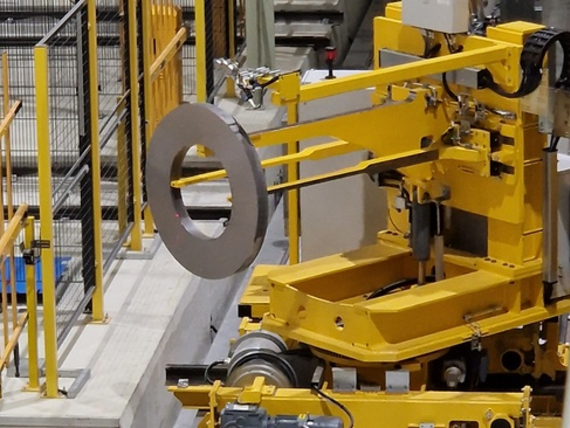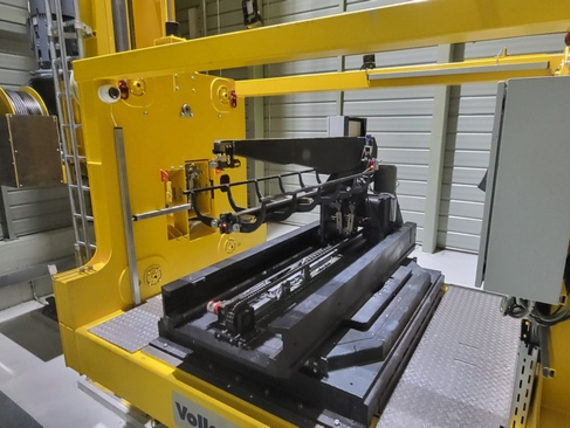The technology is comparable, but the dimensions and speeds have been increased even further: with a length of over 200 meters and 2,300 cantilever arms, the second order for the construction of a cantilever high-bay warehouse for TBEA exceeds the performance data of the first project. The new warehouse offers space for around 32,000 steel coils. Vollert had already built a fully automated intralogistics system for TBEA in 2020 for the intermediate storage, delivery and removal of steel coils to several cutting lines. A twin plant is now being built at the same location and Vollert was the only supplier from Germany to be commissioned again. The planning, development, production and assembly of the intralogistics will therefore once again bear the "Made in Germany" seal in TBEA's new flagship project. "For us, this is a great vote of confidence, which we are very pleased about. Precise storage technology is required when handling the highly sensitive coils, and the statics of the high-bay warehouse must also be continuously taken into account during storage and retrieval and monitored by the control system. This is a task that really appeals to us," explains Bastian Binnig, Senior Sales Manager at Vollert. Three stacker cranes and four transfer platforms are used to store and retrieve the coils and feed the cutting lines. With around 90 movements per hour, the system has also become even faster.
Well sorted: Up to 14 different strips on one cantilever arm
The challenge for the Vollert team was not the payload of up to 5 tons, but the extremely high variance and sensitivity of the steel coils, also known as strips. A 2 x 2 m raw coil is turned into numerous different slit strips that vary greatly in width, diameter and weight. This places high logical demands on the high-bay warehouse software, as the different weights must be taken into account for static reasons when sorting the strips on the cantilever arms. The load on the high-bay warehouse as a whole and its balancing also play a role. The stacker cranes can combine the strips in badges on the cantilever arms or separate them again and correct the distances between the reels.
Sensitive heavy-duty technology
"The distances between the coils are kept very small in order to achieve the highest possible number of strips on each cantilever arm. For the stacker crane, however, this means maximum precision when loading and unloading the strips," explains Kevin Dietrich, Project Manager at Vollert. In addition, the reel-free strips change their shape depending on their circumference and weight and are also sensitive to damage. "Handling the coils requires real expertise in planning and implementation. This is where subtleties make the difference and ultimately ensure the high reliability and performance of the entire system." The fact that Vollert was commissioned with the second high-bay warehouse for TBEA is proof of the successful collaboration. Vollert is installing four transfer platforms to connect the 16 cutting lines and the high-bay warehouse. At the same time, the transfer platforms weigh the coils for a continuously updated overview of the material flows in production and quality control.
Turnkey project - planning, steel construction and plant engineering
The structural engineering, planning and plant technology were provided by Vollert in Germany. However, the global player also has its own subsidiary in China, which coordinates with the customer and the long-standing local steel construction partners, as well as local employees for service and retrofitting. This enables short distances and rapid processing: the Weinsberg-based intralogistics experts received the order as general contractor for the new high-bay warehouse at Christmas, with delivery scheduled for spring 2025.





